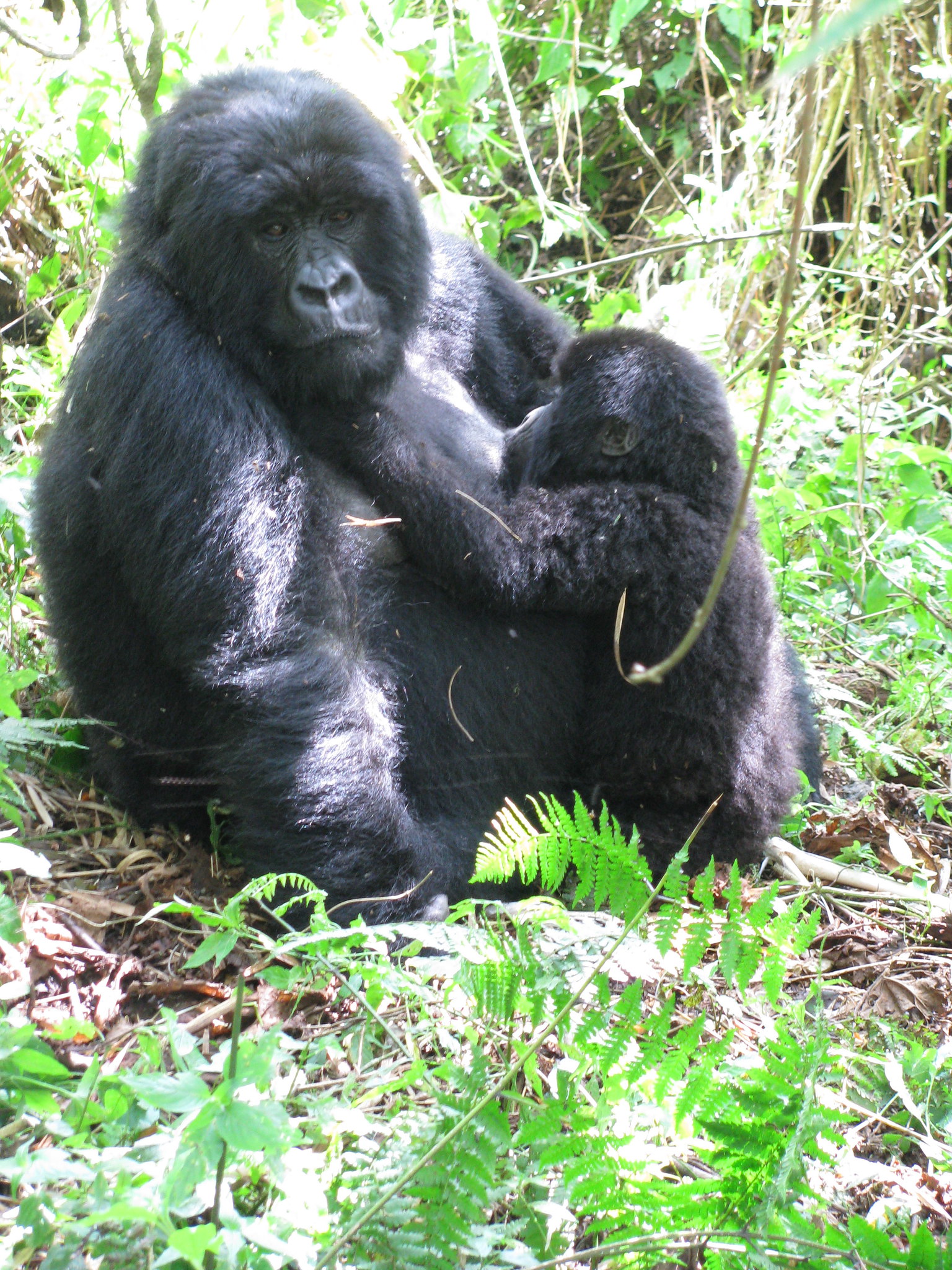Gorilla Viewing Time in Rwanda
Overview
Gorilla Viewing Time in Rwanda. In Rwanda, the viewing time for mountain gorillas during a trek is strictly regulated to ensure the safety and well-being of these endangered animals. Once you locate a gorilla group, you are allowed to spend one hour observing them. This guideline, set by the Rwanda Development Board (RDB), is crucial for conservation efforts, as it minimizes stress on the gorillas and allows them to maintain their natural behaviors.
Prior to the trek, participants attend a briefing where guidelines are explained, including the importance of keeping a safe distance of at least 7 meters from the gorillas. The duration of the trek to find the gorillas can vary, ranging from about 30 minutes to several hours, depending on their location in the forest.
During the hour spent with the gorillas, trekkers can witness their daily activities—feeding, playing, and interacting—while adhering to regulations that protect both the animals and the visitors. After the viewing period, trekkers are required to exit the area, ensuring that the gorillas are not overly disturbed.
Overall, the one-hour viewing time is designed to provide a meaningful and respectful encounter with Rwanda’s mountain gorillas while supporting ongoing conservation efforts.
1. Standard Viewing Duration
- One Hour Limit: When you trek to see mountain gorillas in Rwanda, you are allowed to spend one hour observing them once you find the group. This time limit is established by the Rwanda Development Board (RDB) to minimize stress on the gorillas and ensure their well-being.
2. Purpose of the Time Limit
- Conservation Efforts: The one-hour rule helps protect the gorillas from excessive human interaction, which can lead to stress and potential health risks. Maintaining a strict viewing time is essential for conservation efforts, as gorillas are a vulnerable species.
- Behavioral Observations: The limited viewing time encourages trekkers to be present and mindful during their encounter, allowing for a more impactful and respectful experience.
3. Pre-Trek Briefing
- Guidelines Explained: Before heading into the forest, all trekkers attend a briefing session. During this session, guides explain the viewing rules, including the importance of the one-hour limit and how to behave around the gorillas to ensure both your safety and theirs.
- Health Precautions: The briefing also covers health guidelines, such as maintaining a distance of at least 7 meters from the gorillas to reduce the risk of disease transmission.
4. Trekking Duration
- Varied Trekking Times: The time it takes to reach the gorillas can vary significantly based on their location within the forest. This could range from a short 30-minute hike to several hours of trekking through dense vegetation.
- Physical Fitness: Because the trek can be physically demanding, a good level of fitness is recommended. Guides will assess the group and provide appropriate pacing.
5. Viewing Experience
- Natural Behavior: During the hour, you’ll have the opportunity to observe the gorillas’ natural behaviors—feeding, playing, and resting. The guide will help you understand their social dynamics and provide insights into their daily lives.
- Photography: While you can take photos during your hour with the gorillas, it’s essential to do so without using flash to avoid startling them.
6. Post-Viewing Regulations
- Leaving the Area: After the one-hour viewing period is over, trekkers are required to leave the gorillas and head back to the starting point. This rule helps maintain the animals’ natural habitat and behavior.
- Reflection Time: Many trekkers find that the experience is profound and often spend time reflecting on it during the hike back.
Conclusion
The one-hour viewing time for gorillas in Rwanda is a crucial aspect of responsible tourism and conservation. It allows for a meaningful encounter with these magnificent creatures while ensuring their protection and well-being. When planning your trek, be prepared for the physical demands of the hike and embrace the opportunity to observe the gorillas in their natural habitat within the set guidelines. This experience is not only a highlight of any visit to Rwanda but also a vital contribution to the conservation of mountain gorillas.




